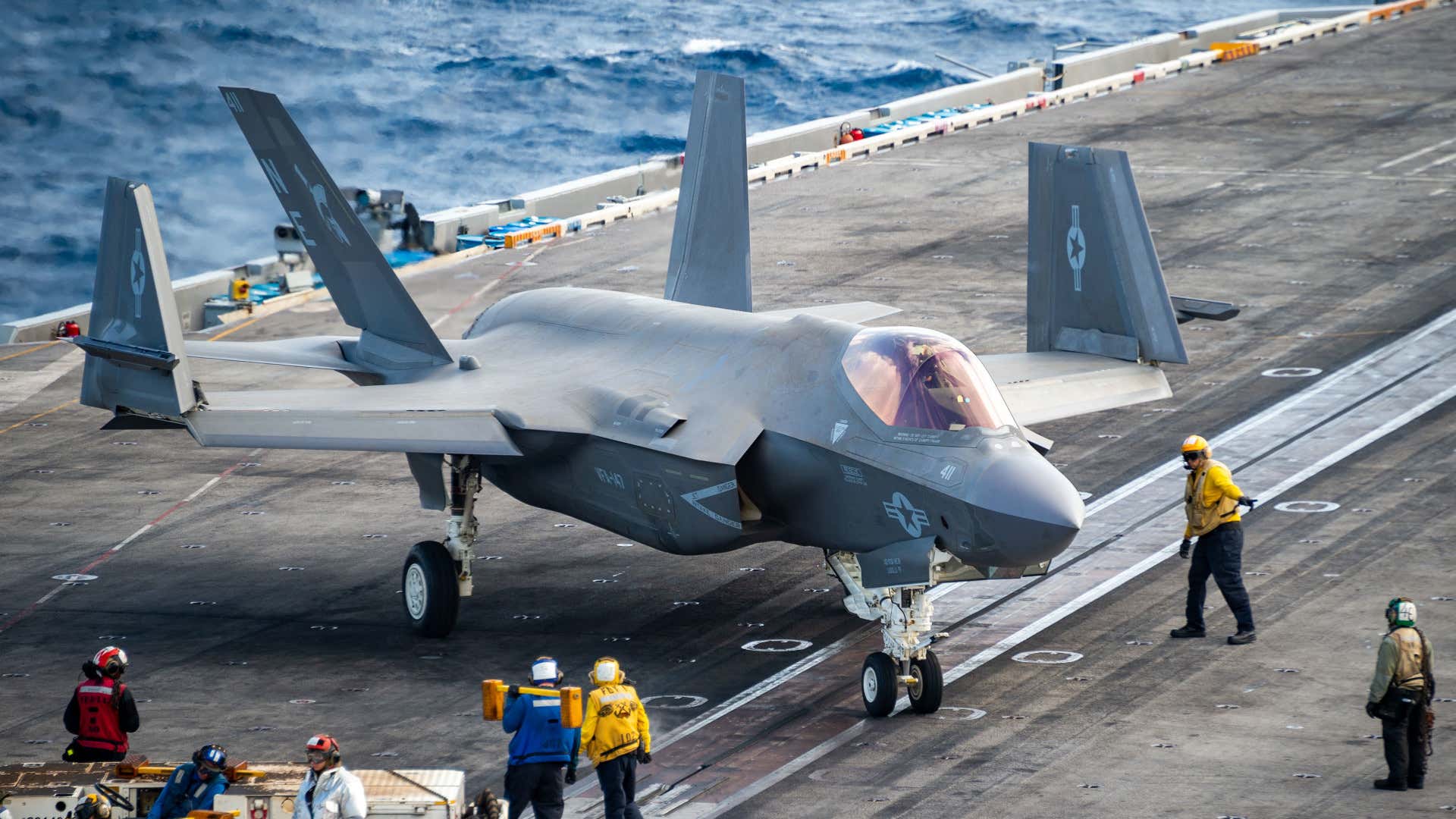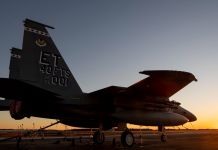A US Navy F-35C operating from the Carl Vinson aircraft carrier had an accident earlier this week and fell into the South China Sea. Washington’s efforts to recover the high-end fighter aircraft are now underway even as western analysts flagged a potential threat of China gaining access to the warplane.
Australia Accelerates Hypersonic Weapons Development Amid Growing China Concerns; Opens New Research Center In Brisbane
On January 24, the US Navy’s stealth aircraft experienced a “landing incident” on the deck of USS Carl Vinson. The Navy released a statement saying that seven US military personnel had been injured in the mishap. However, the pilot managed to eject safely and no casualties have been reported.
The pilot was performing routine flight operations when the incident took place. After his safe ejection, he was recovered by a military helicopter, according to the Navy. Of the seven injured sailors, three had to be airlifted to Manila for treatment. The other four were treated by a medical team onboard the Carl Vinson.

This was the first-ever plane crash involving the F-35C variant. An investigation has been launched to find out the exact reason behind the accident.
Frequent Accidents
This was the second accident involving an F-35 in 2022 with the first one being reported earlier this month. Back then, the pilot of a South Korean F-35 had to perform an emergency “belly landing” at an airbase after the jet’s landing gear malfunctioned, owing to technical difficulties.
Overall, in recent times, the highly expensive F-35 fighter has been involved in seven incidents (including the latest incident).
It was also the fifth major mishap involving fighter aircraft aboard the Carl Vinson since late November last year. However, the frequency of these accidents is not the only cause for worry. Some quarters have expressed a fear that China might get their hands on the technology that F-35 jets carry in case they find the wreckage before the US does.
Efforts To Recover F-35C On
The Vinson suffered minimal damage from the accident and the air wing of the carrier has already resumed operations. Meanwhile, the USN is making efforts towards retrieving this jet from the depths of the South China Sea.
A spokesperson for the US 7th fleet, Lt. Nicholas Lingo, told the media that “the US Navy is making recovery operations arrangements for the F-35C aircraft involved in the mishap aboard USS Carl Vinson.”
The recovery of the crashed jet is likely to face hurdles not just because of the daunting nature of the mission itself, but also due to the fact the accident took place in the highly contested waters of the South China Sea.
Beijing claims almost the whole of the 3.3 million square kilometer area covered by the waterway as its own sovereign territory. It has been seeking to embolden this claim by building up and militarizing reefs and islands in the region.

China’s naval and coast guard vessels maintain a constant presence in the waters of the South China Sea. Analysts believe that Beijing will keep a hawk-eye on the US’ recovery operation. Some have indicated that it may try to obtain F-35’s technology by salvaging the wreckage themselves.
It is worth mentioning that China has been consistently accused of stealing and incorporating US’ technology into its weapon platforms in the past. Perhaps the most sensational claim came from US aerospace giant Lockheed Martin in 2007 when it alleged that Chinese hackers had been stealing technical documents related to the F-35 program for quite some time.
A similar theft also occurred when hackers providing their services to Beijing breached the network of an Australian F-35 sub-contractor. There seems to be a high chance that the information and technical data that China had acquired then has been utilized in the production of the J-20.
The Latest Concerns
The EurAsian Times asked Manoj Kewalramani, Fellow, China Studies, Takshashila Institution, about the possibility of China making a move to recover the aircraft before the US does. He noted that it is difficult to speculate about the same, given the fact that not much is known about the location of the incident, apart from the knowledge that it has happened in the South China Sea.
“I think we can expect Beijing to make some rhetorical capital from the incident. One can expect it to use the crash to make the broader argument about the waning of US power and its limitations. If it does so officially, say through the Ministry of Foreign Affairs or Ministry of National Defense, it is likely to also reiterate its claim of sovereignty over the waters,” Kewalramani, who has authored a book, Smokeless War: China’s Quest for Geopolitical Dominance, said.

In going beyond this potential narrative-oriented approach, China is likely to be wary. Kewaramani said, “In terms of actually claiming the right to salvage or surveilling US salvage operations, I would think that they will be very careful. Of course, they would like to get their hands on the technology, but I would be very surprised if they got really close to where US salvage operations are said to be taking place. I don’t think they would risk that escalation.”
“If something is left behind that is believed to be of some consequence, then I would assume there will be some inclination from Beijing to take a look,” he added.
Rajiv Nayan, the Senior Research Associate at the Manohar Parrikar Institute for Defence Studies and Analyses (MP-IDSA), has a slightly different take on this. Cleary specifying that the question is speculative, Nayan told EurAsian Times that “China [in fact] may help the US. This is not a war. This is a tense situation.” He further added that “China plays a complex game. It blows hot and blows cold both. In fact, by helping the US it may win laurels and thus, score some brownie points.”
Meanwhile, Chinese state media The Global Time in its typical cataclysmic OPED states that the crash has exposed the fatigue of the US military, which has been exhibiting its prowess against China at the cost of the physical and mental health of its soldiers and high technical risks.
US fighters and naval vessels often suffer accidents in the West Pacific, including the nuclear-powered submarine USS Connecticut’s collision in the South China Sea some time back. These deadly mishaps are due to the US military’s highly aggressive deployment year in and year out as it attempts to showcase its might and counter Beijing, experts told the Chinese state media.
- Contact the author at: shreyya.mundhra@gmail.com
- Follow EurAsian Times on Google News




